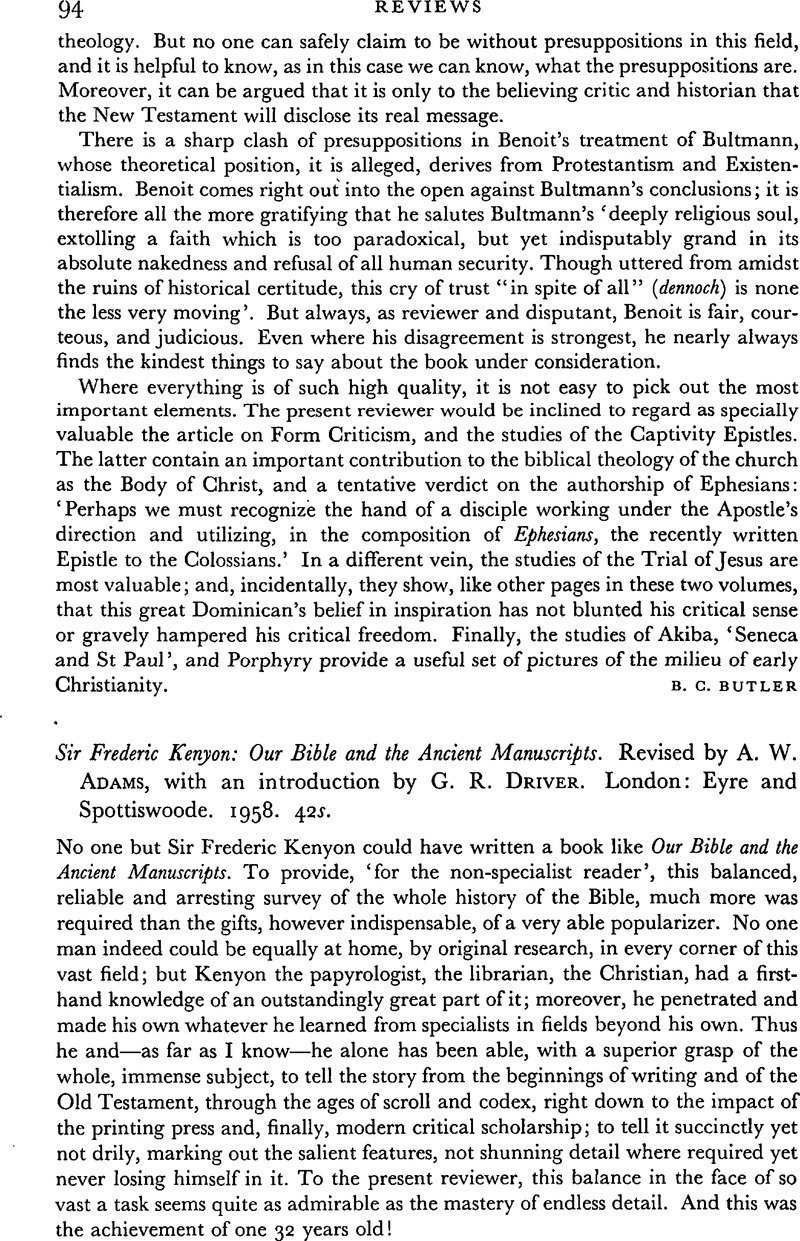No CrossRef data available.
Published online by Cambridge University Press: 05 February 2009

1 Introduction… (1882), p. 54.Google Scholar
2 Introduction, p. 285.Google Scholar
1 It eludes me how (p. 99) the prophetic books could be said to be ‘much freer’ than Genesis seeing that their stle is so infinitely more slavish an imitation of the original—and ibid.) how the Hagiographa could have been added ‘by the beginning of the Christian era’–this statement being followed immediately by a reference to Sirach attesting them for his time (and, in fact, ‘Aristeas’ quotes Proverbs). Baffling, too, I find the statement (p. 135), that ‘another Syriac translation of the Old and New Testaments was made by Philoxenus of Mabug from the Septuagint’ (I should be glad to know if—qua Old Testament—this statement rests on more than the slender hypotheses of Gwynn and Ceriani).
2 The summary of ‘Aristeas’ contains some factual errors.
3 The ‘Württemburg Bibelanstalt’ no doubt will disappear from p. 87 in a future edition, likewise the ‘conspexus’ from p. 184. On p. 85 read ‘p1. ix’ for ‘xi’.